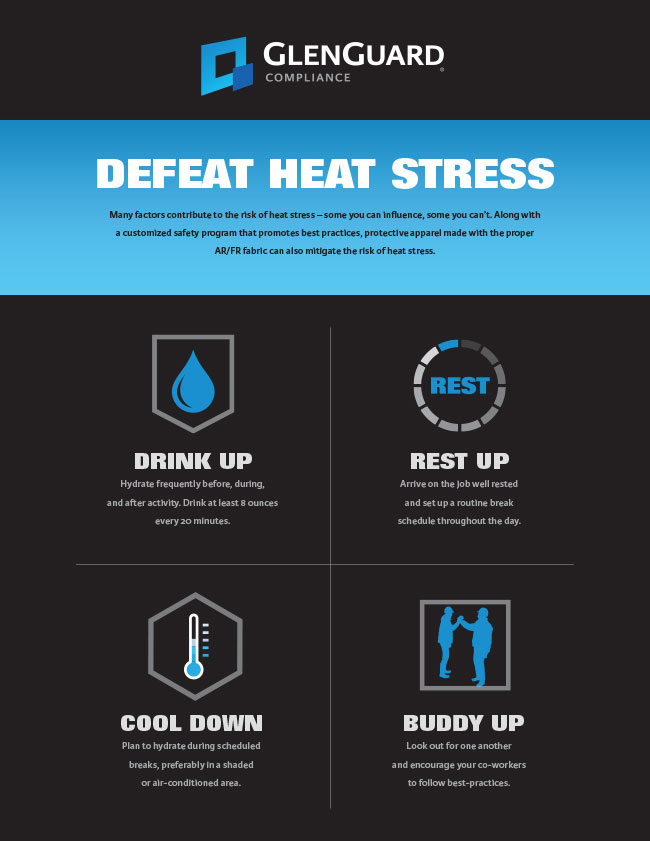In a perfect world, we would all work in weather-controlled environments where heat wouldn’t be a factor and comfort could be maximized. Many workplaces, however, deal with very high temperatures, and heat stress is a constant risk that requires serious consideration.
Heat stress is the single largest issue facing safety managers when combating worker compliance. If the garments are too heavy, uncomfortable, too hot, or don’t cool well enough, workers are far less likely to wear them compliantly. This increases the risk of danger and can be an unpredictable factor in the work environment.
In those situations, it is critical for safety professionals to maximize opportunity for their workers to remain protected from the factors that lead to heat stress. This can be accomplished through a number of tactics and through thoughtful, intentional application of preventative measures.
Unacceptable levels of heat stress are likely to occur in many scenarios. As a general rule, there are four primary approaches to the solution: modify the work, the work environment, the worker, or the clothing or equipment.
These limited options become even more constraining when considering how regulations often curb the ability to modify these factors. The work has to get done no matter the environment, but safety must also be maintained.
AVOIDING HEAT STRESS
The most effective and practical approaches to prevent heat stress are to acclimatize workers or to modify their workwear. But there are also day-to-day measures that can be taken to prevent significant heat stress incidents.
First and foremost, encouraging your team to keep a close eye on one another is critical to a safe work environment. The effects of heat stress can lead to miscalculated judgment, meaning a good “buddy system” will keep workers on the lookout for the signs of heat stress in each other.
Staying hydrated is another critical step. Workers should drink at least 8 ounces of water every 20 minutes to keep the body’s natural cooling processes running smoothly. Additionally, scheduling set times for breaks (preferably in a cool, shaded area) will also make sure your team has a set time to find relief from the heat.
Avoiding heat stress even goes beyond the job site: Encouraging your team to get a good night’s sleep before every shift can play a significant part in the body’s ability to fight off heat-related fatigue and discomfort.








